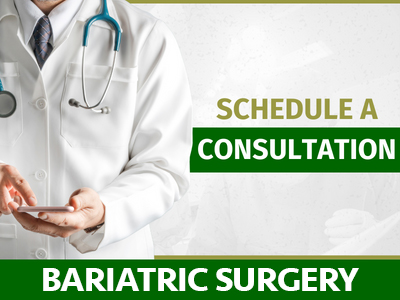Revision Procedures
New Jersey Gastric Sleeve Revision
Although vertical sleeve gastrectomy (VSG) is effective for many patients, some do not lose adequate weight, therefore revision weight loss surgery may be needed to cause additional weight loss.
Revision Procedures
Although vertical sleeve gastrectomy (VSG) is effective for many patients, some do not lose adequate weight, therefore revision weight loss surgery may be needed to cause additional weight loss.
Gastric Restrictive Procedure
Failure after vertical sleeve gastrectomy may be caused by a couple of different factors.
Most revision operations are higher risk than the first time a weight loss surgery procedure is performed. Conversion from vertical sleeve gastrectomy to gastric bypass carries with it less risk than performing the duodenal switch in a single operation for the first time. This is possible due to the fact that vertical sleeve gastrectomy is one portion of the duodenal switch procedure. When converting to gastric bypass from vertical sleeve gastrectomy, a significant piece of the operation has already been performed. This results in a smaller surgical procedure than performing the duodenal switch all at once.
Stretching of the stomach often results in additional problems other than inadequate weight loss or weight regain. The tube of the stomach may stretch in a manner that is not uniform, resulting in portions of the stomach tube being larger than others. This can cause the stomach to become shaped like an hourglass, where both the upstream and downstream portions of the stomach are large, but they are separated by a portion of the stomach that is fairly narrow. While eating may not increase as a result of a stretched stomach tube, it may cause uncomfortable and/or disordered eating. Depending on the volume of food a patient consumes at each meal and the symptoms they have, there are a couple of revision options that all result in food flowing more directly through the stomach.
Laparoscopic Sleeve Gastrectomy Revision Surgery in New Jersey has helped thousands of people discover life at a healthier weight and resolve many of the health risks associated with severe obesity.
To learn more, call (973) 410-9700 or contact us online.

![]()
“I have been a patient of Dr. Abkin for over 3 years, since 2020. I’ve lost 85 pounds and will be forever grateful for this life changing experience. Every staff member genuinely cares in the ease and success of your journey. They leave no stone unturned. Dr. Abkin is a master at his craft and truly makes you feel comfortable with process. I’ve never felt more confident in my own skin! I will continue to refer anyone struggling with weight loss and health issues to his office. It’s a second chance at a new life!”
Gastric Bypass

![]()
“Dr. Abkin’s expertise in performing my gastric sleeve surgery in 2022 was truly remarkable. From our first consultation to post-op follow-ups, he demonstrated genuine care and professionalism. The procedure went flawlessly, and I felt well-informed and confident throughout. Thanks to Dr. Abkin’s skill and guidance, I’ve achieved significant weight loss and improved health. Grateful for his exceptional care on this transformative journey.”
Sleeve Gastrectomy

![]()
“After undergoing gastric sleeve surgery, I am amazed by the positive impact it has had on my life. The procedure was smooth, and the medical team was extremely supportive throughout the process. I’ve experienced significant weight loss and newfound energy. My confidence has soared, and I’m enjoying a healthier lifestyle. Grateful for this life-changing surgery.”
Sleeve Gastrectomy

![]()
“Today, at the age of 45, I can confidently say that I am in the best shape of my life. I feel great, and my depression is a thing of the past. I have found purpose once again. And now, I am eager to share my story with all of you. Dr. Abkin and Dr. Jawed, you have saved my life! You have given my wife her husband back, and my children have their father again!”
Sleeve Gastrectomy

![]()
“Enormously thankful to Dr. Abkin for changing my life! Lost over 150 lbs after having sleeve surgery in 2019. His expertise and support made my transformation possible. Forever grateful!”
Sleeve Gastrectomy

![]()
“Dr. Abkin was so friendly and explained each procedure thoroughly. I never felt forced or not heard, which really made me feel very comfortable with going forward with the surgery. Well a year later and I’m reflux free and still losing weight and extremely happy with all my services from him and his staff! I have referred him several times to my friends and co workers and will keep referring him!”
Sleeve Gastrectomy Revision
Request a consultation today.
*all fields are mandatory.
*By submitting this form you agree to be contacted via phone/text/email. Reply ‘STOP’ to opt-out of marketing at any time*
We accept most major insurance. Financing available via CareCredit.
83 Hanover Road
Suite 190
Florham Park, NJ
Phone: (973) 410-9700
Fax: (973) 410-9703
Directions
98 James Street
Suite 212
Edison, NJ
Phone: (973) 410-9700
Fax: (973) 410-9703
Directions
Mon: 8:00AM – 4:00PM
Tue: 8:00AM – 4:00PM
Wed: 8:00AM – 4:00PM
Thu: 8:00AM – 4:00PM
Fri: 8:00AM – 4:00PM
Sat & Sun: Closed

Please enter your information below:
By submitting this form, I agree to be contacted via phone, text, email. Reply ‘STOP’ to opt-out of marketing at any time.
